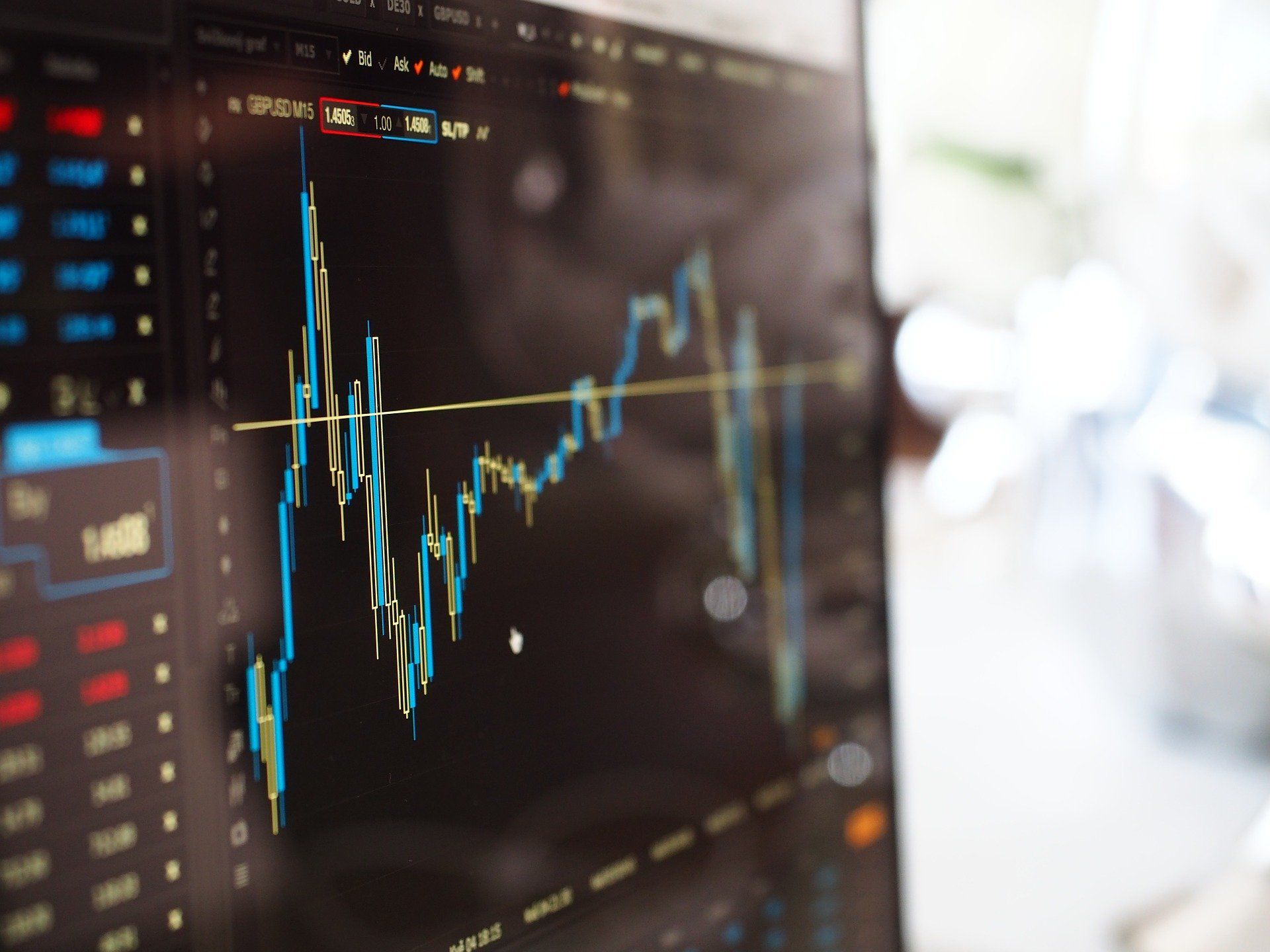Indian market indexes extended yesterday’s gains and closed more than 2% higher on Wednesday, matching the recovery in global equities. Following a flat start, the benchmarks progressively increased as the day went, eventually settling around the day’s high.
The Nifty50 has formed a long bull candle on the daily chart, reflecting a sharp upside reversal from the lows, according to Nagaraj Shetti, Technical Research Analyst at HDFC Securities.
The index now faces a hurdle at 16,450-16,500 levels, a sustainable move above which can take it towards the next key resistance in the 16,800-17,000 zone, he said.
Sensex rose 1223.24 points or 2.29% to 54,647.33 and Nifty was up by 331.90 points or 2.07% to 16,345.35 in the previous session. Sensex touched high and low of 54,893.73 and 53,367.52, respectively. There were 25 stocks advancing against 5 stocks declining on the index. Nifty traded in a range of 16,418.05 and 15,990.00. There were 40 stocks advancing against 10 stocks declining on the index.
Broader Indices
The broader indices ended in green with the BSE Mid cap index rising 2.37%, while the Small cap index was up by 2.16%. The top gaining sectoral indices on the BSE were Energy up by 3.58%, Realty up by 3.16%, Auto up by 2.92%, Consumer discretionary up by 2.72% and Industrials up by 2.54%, while Metal down by 0.69%, Utilities down by 0.10% and Power-down by 0.03% were the few losing indices on BSE.
Support and Resistance levels
The key support level for the Nifty is placed at 16,084, followed by 15,823. If the index moves up, the key resistance levels to watch out for are 16,512 and 16,679, according to Pivot charts.
SGX Nifty
The trends on SGX Nifty indicate a positive opening for the index in India with a 21-points gain. The Nifty futures were trading at 16,621.20 on the Singaporean Exchange around 06:55 hours IST.
Asian Markets
Asian markets finished broadly lower yesterday with shares in China leading the region. The Shanghai Composite was down 1.13% while Hong Kong’s Hang Seng was off 0.51% and Japan’s Nikkei 225 was lower by 0.30%.
The S&P 500 rose 107.18 points, or 2.6%, to 4,277.88.
The Dow Jones Industrial Average rose 653.61 points, or 2%, to 33,286.25.
The Nasdaq rose 459.99 points, or 3.6%, to 13,255.55.
The Russell 2000 index of smaller companies rose 53.28 points, or 2.7%, to 2,016.29.
European Markets
European markets finished mixed. The DAX gained 6.90% and the FTSE 100 rose 2.60%. The CAC 40 lost 0.50%.
Soaring nickel prices likely to impact global electric vehicle production
Production of batteries for electric vehicles and the stainless steel, paint and alloy-based industries are likely to be affected as prices of key raw material, nickel has spiked over 100% in the past few days. The Russia-Ukraine crisis has led to a nickel shortage which, in turn, led to a massive spike in prices. On Tuesday, nickel prices surged as high as 111% to trade briefly above $100,000 per tonne. The unprecedented surge in price led the London Metal Exchange (LME) to suspend trading in non-ferrous metal. However, prices corrected soon after on Tuesday itself. Russia is one of the largest producers of metal in the world. New and harsher sanctions against Russia for its invasion of Ukraine have raised concerns over disruption in global supplies. Rising nickel prices have halted Tesla and other automakers’ plans of introducing more affordable vehicles. The major advantage of using nickel in batteries is that it helps deliver higher energy density and greater storage capacity at a lower cost. Several automakers are investing heavily in Electric Vehicles.
Commodity price increases may boost CAD to 2.8% of GDP in Q3
The country’s current account deficit (CAD) is likely to widen to a 13-quarter high of $23.6 billion or 2.8% of GDP in October-December 2021-22 due to higher commodity prices following the Russia-Ukraine conflict, India Ratings and Research (Ind-Ra) said in a report. The report said although the Omicron-led COVID wave has subsided, the geopolitical risks to the global recovery have increased due to the Russia-Ukraine conflict. “We expect the CAD to come in at the second-highest level of $23.6 billion (2.8% of GDP; 13-quarter high) in Q3 FY22 as against a deficit of $9.6 billion (1.3% of GDP) in Q2 FY22,” the agency said. In Q3 FY21, the deficit was $2.2 billion (0.3% of GDP). The direct effects of the Russia-Ukraine conflict have pushed commodity prices and freight and transportation costs higher; crude oil prices have been on a boil, it said. In addition, the Indian rupee, which averaged at 75 against the dollar in February 2022, is expected to average around 76 this month which might result in a depreciation of 0.29% in the fourth quarter over the previous three-month period, the report said.
LIC gets SEBI’s nod for the biggest Indian IPO ever
Life Insurance Corporation of India (LIC) got approval from market regulator Sebi on Tuesday to raise funds through an initial public offering, according to CNBC-TV18. This month, the government was expecting to sell a 5% stake in Life Insurance Corporation (LIC), which may generate more than Rs 60,000 crore for the exchequer. LIC had submitted its draft documents to the market regulator in February. The issuance would be an offer for sale of 31,62,49,885 equity shares by the government, which owns 100% of the insurance behemoth. A total of 50% of the net issue would be allocated for qualified institutional buyers (QIBs), with the remaining 15% reserved for non-institutional investors. The retail part of the promotion has been set at 35%. According to the DRHP, the issue will most likely have reservations for eligible employees and policyholders of the company. In FY21, LIC reported a net premium income of Rs 4.02 lakh crore and the total revenue stood at R 6.82 lakh crore. Profit after tax (PAT) came in at Rs 2,900 crore. LIC holdings in value terms stood at Rs 9.53 lakh crore at the end of the third quarter, up 1.46% from the previous quarter. It owns a 16% stake in ITC, 7.48% in M&M, 2.63% in HDFC Bank, 6.13% in Reliance and 5.67% in Infosys.
Vikram Limaye ‘not interested’ in applying for second term as NSE CEO & MD
Vikram Limaye, the National Stock Exchange’s managing director and chief executive officer (MD and CEO), has decided to leave the company after his first term ends in July of this year. “I have informed the board that I am not interested in a second term and will therefore not be applying and participating in the process that is underway,” Limaye told ET. On July 16, his five-year term will come to an end. He is eligible for another term, but he will have to go through the selection process again, competing with external candidates. The NSE issued an advertisement last week seeking applicants for the MD and CEO positions for the upcoming five-year period. Korn Ferry, a consulting firm, has been appointed to monitor the process. “I have done my best to lead the organisation in a very difficult period and to stabilise, strengthen and transform NSE. We have come a long way in terms of controls, governance, technology, regulatory effectiveness and business growth. I am grateful to all stakeholders, regulators, and government for the support extended to me,” he said.
RBI’s digital rupee to speed up transactions, reduce cost of cash: Deloitte
The proposed Central Bank Digital Currency (CBDC) to be issued by the Reserve Bank will play a critical role in improving the speed of transactions and reducing the cost of cash, a Deloitte report said on Wednesday. The Reserve Bank of India is planning to come out with a central bank-backed digital currency, using blockchain technology in 2022-23. As a financial services innovation, CBDCs are likely to play a pivotal role in shaping the ‘future of value transfer’, the report said, adding that most central banks worldwide are now in various stages of their evaluation of launching their national digital currencies. “CBDCs due to its inherent potential of changing the way value transfer happens, provide a more resilient, innovative, and competitive payment system for households, businesses and economies,” said Monish Shah, partner, Deloitte India. Currently, most security clearing and settlement processes have a multi-day lag, he said, adding “with the introduction of Digital Rupee there would be a significant increase in efficiencies and reduction in associated reconciliation costs”. The report said CBDCs are likely to drive efficiencies and effectiveness of a jurisdiction’s payments system by ensuring that its users access safe digital money. CBDCs will provide users with a sovereign option as compared to other less safe digital instruments, which may lead to less reliable payments, relatively volatile store of value and potentially erode monetary and financial stability.
AASIA EXPORTS sold 6,00,000 shares in Hinduja Global Sols Ltd at Rs 1130.00 per share on the NSE.
EAM EMERGING MARKETS SMALL CAP FUND LP bought 16,02,000 shares in Dwarikesh Sugar Industries at Rs 116.04 per share on the NSE.
SMALL CAP WORLD FUND INC sold 3,06,587 shares in Multi Commodity Exchange at Rs 1249.37 per share on the NSE.
B.W.TRADERS sold 1,17,825 shares of HP Adhesives Limited at Rs 374.78 per share on NSE.
OMKAM CAPITAL MARKETS PRIVATE LIMITED sold 261,96,819 shares of Visesh Infotecnics Limited at Rs 1.06 per share on NSE.
THE MIDLAND RUBBER AND PRODUCE COMPANY LIMITED bought 5,400 shares in NEAGI at Rs 3,600.00 per share on the BSE.
SHREE GLOBAL TRADEFIN LIMITED sold 6,754,638 equity shares in LLOYDSME at Rs 129.50 per share on the BSE, the bulk deals data showed.
RAJENDRA GANDHI bought 775,194 shares of STOVEKRAFT at Rs 645.00 per share on BSE.
Foreign institutional investors (FIIs) sold shares worth a net Rs 4,818.71 crore, while domestic institutional investors (DIIs) bought shares worth a net Rs 3,275.94 crore in the Indian equity market on March 9, as per provisional data available on the NSE.
No stock or security has been put under the F&O ban for March 10. Securities in the ban period under the F&O segment include companies in which the security has crossed 95% of the market-wide position limit.







